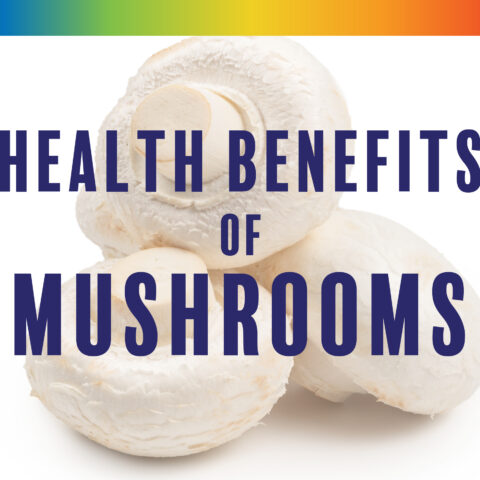Promoting Calcium Balance Health on a Paleo Diet (Easier Than You Think)

When you talk about calcium, the conversation typically shifts quickly over to bone health and osteoporosis.
There’s a reason: the ingrained fear of bone loss is very real.
The US Surgeon General’s Report states that one out of two people over the age of 50 either has osteoporosis or is at risk of developing it.1 In fact, osteoporosis accounts for more hospital days for women over 45 than diabetes, heart attacks or breast cancer. Further, fragility fractures are the leading cause of hospitalization in adults over 65.2,3
These staggering statistics lead most people, including many doctors and nutritionists, to think that the best strategy to protect against osteoporosis and fractures is to supplement with calcium. Unfortunately, this strategy falls well short.26
The problem is that the solution doesn’t lie in one “all-star” mineral – calcium.
A healthy calcium balance requires a “team effort” from a variety of micronutrients – magnesium, vitamins D and K, and potassium. A balance of these nutrients is needed to support bone and heart health, hormone regulation, muscle function and the numerous other benefits often attributed solely to calcium.
So, with this team approach in mind, let’s explore how to maximize your calcium balance with a healthy Paleo diet:
The Concern Over Calcium Recommendations
The Recommended Dietary Allowance (RDA) for calcium is 1,000mg (for adults aged 19-50), and increases to 1,200mg in females over 50 and both men and women seniors aged 71.4 Incredibly, only about 30% of the population achieves the recommended dietary intake for calcium and the majority is derived from dairy.5
One the most common questions people ask when they start a Paleo diet is “where will I get my calcium without consuming any dairy products?” It’s been so ingrained in our psyche since we were young to drink milk for strong bones, that the thought of omitting milk and dairy can be daunting.
Focusing on Calcium as an All-Star: The Wrong Approach
New Paleo dieters concerned about getting their 1,000-1,200mg RDA of calcium often turn to supplements. But the research is mixed on the benefits, and newer studies show supplemental calcium may actually increase your risk of vascular calcification and heart attack.6,7
Others choose to keep some dairy in their diets. But from an evolutionary perspective, the consumption of dairy foods is relatively new, with the domestication of cattle, sheep and goats occurring only about 10,000 years ago.8
Cow’s milk has a very different nutrient profile compared to human milk, with approximately four times more calcium and a calcium to magnesium ratio of 10:1. This ratio is much greater than the 3:1-2:1 ratio seen in ancestral diets rich in fish, seafood and green vegetables and has been shown to disrupt magnesium balance in the body.10
Further, milk may not have the benefits the dairy industry wants you to believe. A recent meta-analysis study of over 195,000 women and 75,000 men found that low milk intake was not associated with increased hip fractures and that increased intake of dairy was not associated with protection against hip fractures.11
Focusing on the Micronutrient Team: The Right Approach to Calcium Balance
The benefit of a Paleo diet is that instead of simplistically seeking to increase calcium intake it naturally supports the ideal ratios of the other key micronutrients required for maximum calcium absorption and retention. Let’s take a look at how these nutrient balance with a Paleo diet:
Your sodium intake plays a key role in calcium retention. The two minerals share some of the same transport systems in the kidneys. Diets high in sodium (typically from processed foods) lead to greater sodium intake and thus calcium excretion.12 Actually, it’s the potassium to sodium ratio that is crucial for calcium retention. The standard American diet (SAD) is shockingly low in potassium and high in sodium – the potassium to sodium ratio of the American diet is typically 10-fold lower than evolutionary diets.13
Focusing on vegetables, fruit, nuts, legumes, fish and seafood (over processed foods) that are naturally much higher in potassium and lower in sodium will help the body conserve calcium more effectively.14
Vitamin D often gets ignored when it comes to bone health, but it may actually be the better predictor of bone mineral density, particularly in women with low levels.15 The sun is far and away your best source of vitamin D, with just 15-30 minutes of sun exposure in the spring and summer months providing enough vitamin D to achieve blood levels of 30-40ng/dL – the currently accepted ideal range.16
If you live in a northern city in the winter months, you’ll likely need to supplement 2,000 IU of a vitamin D daily to maintain your levels (read more Vitamin D: One of the Few Supplements Paleo Dieters May Need).
The forgotten fat-soluble vitamin K operates in sync with the other fat-soluble vitamins like D to maintain healthy calcium balance in the body. Low Vitamin K levels (common with blood-thinning drugs like warfarin) can predispose you to decreased bone density, fractures, and increased vascular calcification.17,18
There are different forms of vitamin K. Phylloquinone (vitamin K1) is found in green leafy vegetables like kale, collards, mustard greens, parsley, spinach, and Swiss chard. Menaquinone (vitamin K2) is found in the fat of pastured-raised meats and fermented foods.19 K2 is more protective for bone and heart health. It is naturally produced in your gut, where K1 is converted to K2 by “good” bacteria.
Supplemental vitamin K can be taken in conjunction with vitamin D at 50mcg per 2,000 IU of vitamin D.
Paleo-Friendly Calcium-Rich Foods
It’s still important to make sure you are getting adequate calcium in your Paleo diet. The main dietary source of our Paleolithic hunter-gatherer ancestors was animal bones and cold-water fish. Sardines and salmon with skin and bones provides 250mg and 240mg of calcium respectively per 3.5 oz. serving.20 Mackerel and anchovies are your next best bet with about 200mg per serving.
Spinach, kale, collard and turnip greens are also calcium powerhouses, providing about 200-250mg per cup.21 Cruciferous veggies like broccoli and brussels sprouts are the next best source with one cup providing 60mg each. Tahini (sesame seed butter) provides 130mg per 2 tbsp, and almonds 93mg per ¼ cup.21
If your sweet tooth strikes, a medium orange contains 60mg of calcium and a tablespoon of blackstrap molasses incredibly gives you 170mg of calcium.21
A sample day might look like salmon (3.5 oz) and spinach (1 cup) for lunch, followed by and orange snack and kale (2 cups) for dinner and you’ve already achieved 800mg of calcium. Not only that, you’ve also boosted your intake of the rest of the calcium team – potassium, magnesium, vitamin K and D for superior bioavailability and better calcium retention.
Finally, you shouldn’t be concerned about the effects of a high-protein Paleo diet on your calcium balance. High protein diets have been shown to actually support bone anabolism by boosting IGF-1 and to be superior to vegetarian and vegan diets when it comes to increasing bone mass and reducing fracture rates.23,24,25
Calcium gets the spotlight when it comes to bone health, but the calcium story gets quite complex when you take into account its bioavailability and all the key players. It’s not just how much you eat, but also how much you absorb and how much your body retains. The reality is it’s a team effort to support strong bones, protect your heart and provide the numerous benefits of calcium in the body.
The good news is the solution doesn’t need to be complex. A food-based approach, the hallmark of a Paleo diet, is the ideal platform for optimal calcium status. Eat your greens, include regular fish and consume adequate protein to achieve your ideal daily intake of calcium (850-1,100mg) to support strong bone and heart health by following the blueprint from our hunter-gatherer ancestors.
References
[1] NOF National Osteoporosis Foundation. America’s bone health: The state of osteoporosis and low bone mass in our nation. Washington (DC): National Osteoporosis Foundation; 2002.
[2] Kanis JA, Delmas P, Burckhardt P, et al. Guidelines for diagnosis and management of osteoporosis. The European Foundation for Osteoporosis and Bone Disease. Osteoporos Int 1997 7:390.
[3] Burden of Musculoskeletal Diseases in the United States: Prevalence, Societal and Economic Cost. Chap 5. Osteoporosis and Bone Health. Rosemont, IL, American Academy of Orthopaedic Surgeons, February 2008.
[4] Committee to Review Dietary Reference Intakes for Vitamin D and Calcium, Food and Nutrition Board, Institute of Medicine. Dietary Reference Intakes for Calcium and Vitamin D. Washington, DC: National Academy Press, 2010.
[5] Nicklas TA, O’Neil CE, Fulgoni VL. The Role of Dairy in Meeting the Recommendations for Shortfall Nutrients in the American Diet. J Am Coll Nutr February 2009 vol. 28 no. Supplement 1 73S-81S.
[6] Hilgard P. Experimental hypercalcaemia and whole blood clotting. J Clin Pathol. 1973;26(8):616–9.
[7] Michaelsson K, Melhus H, Warensjö Lemming E, Wolk A, Byberg L. h: community based prospective longitudinal cohort study. BMJ 2013; 346:f228
[8] Hiendleder S, Kaupe B, Wassmuth R, Janke A. Molecular analysis of wild and domestic sheep questions current nomenclature and provides evidence for domestication from two different subspecies. Proc R Soc Lond B 2002;269:893-904. Medline
[9] Prince RL, et al. Effects of calcium supplementation on clinical fracture and bone structure: results of a 5-year, double-blind, placebo-controlled trial in elderly women. Arch Intern Med. 2006;166(8):869–75.
[10] Evans GH, Weaver CM, Harrington DD, Babbs CF Jr. Association of magnesium deficiency with the blood pressure-lowering effects of calcium. J Hypertens. 1990 Apr;8(4):327-37
[11] Bischoff-Ferrari HA, Dawson-Hughes B, Baron JA, Kanis JA, Orav EJ, Staehelin HB, Kiel DP, Burckhardt P, Henschkowski J, Spiegelman D, Li R, Wong J, Feskanich D, Willett WC. Milk intake and risk of hip fracture in men and women: a meta-analysis of prospective cohort studies. Bone Miner Res. 2011 Apr;26(4):833-9.
[12] Cappuccio FP, Kalaitzidis R, Duneclift S, Eastwood JB. Unravelling the links between calcium excretion, salt intake, hypertension, kidney stones and bone metabolism. J Nephrol 2000; 13: 169–177.)
[13] Bussemaker E, Hillebrand U, Hausberg M, Pavenstadt H, Oberleithner H. Pathogenesis of hypertension: interactions among sodium, potassium, and aldosterone. Am J Kidney Dis. 2010;55(6):1111-1120.
[14] Lanham-New SA. The balance of bone health: tipping the scales in favor of potassium-rich, bicarbonate-rich foods. J Nutr. 2008;138(Suppl):S172–S177.
[15] Bischoff-Ferrari HA, Kiel DP, Dawson-Hughes B, et al: Dietary calcium and serum 25-hydroxyvitamin D status in relation to BMD among U.S. adults. Journal of bone and mineral research : the official journal of the American Society for Bone and Mineral Research 24:935-42, 2009.
[16] Dobnig H, Pilz S, Scharnagl H, Renner W, Seelhorst U, Wellnitz B, Kinkeldei J, Boehm BO, Weihrauch G, Maerz W. Independent association of low serum 25-hydroxyvitamin d and 1,25-dihydroxyvitamin d levels with all-cause and cardiovascular mortality. Arch Intern Med. 2008 Jun 23;168(12):1340-9.
[17] Caraballo PJ, Heit JA, Atkinson EJ, et al. Long-term use of oral anticoagulants and the risk of fracture. Arch Intern Med. 1999;159(15):1750-1756. (PubMed)
[18] Schurgers LJ, Aebert H, Vermeer C, Bultmann B, Janzen J. Oral anticoagulant treatment: friend or foe in cardiovascular disease? Blood. 2004;104:3231–3232.
[19] Geleijnse JM, Vermeer C, Grobbee DE, et al. Dietary intake of menaquinone is associated with a reduced risk of coronary heart disease: the Rotterdam Study. J Nutr. 2004 Nov;134(11):3100-5
[20] Bischoff-Ferrari HA, Bess Dawson-Hughes B, Baron JA, Burckhardt P, Li R, Spiegelman D, Specker B, Orav JE, Wong JB, Staehelin HB, O’Reilly E, Kiel DP, Willett WC. Calcium intake and hip fracture risk in men and women: a meta-analysis of prospective cohort studies and randomized controlled trials. Am J Clin Nutr December 2007 vol. 86 no. 6 1780-1790
[21] Dieticians of Canada. Retrieved from – //www.dietitians.ca/Your-Health/Nutrition-A-Z/Calcium/Food-Sources-of-Calcium.aspx
[22] Calvez J, Poupin N, Chesneau C, Lassale C, Tome D. Protein intake, calcium balance and health consequences. European Journal of Clinical Nutrition 30 November 2011 66, 281-295.
[23] Dawson-Hughes B, Harris SS, Rasmussen H, Song L, Dallal GE. Effect of dietary protein supplements on calcium excretion in healthy older men and women. J Clin Endocrinol Metab. 2004;89:1169–1173.
[24] Bourrin S, Ammann P, Bonjour JP, Rizzoli R. Dietary protein restriction lowers plasma insulin-like growth factor I (IGF-I), impairs cortical bone formation, and induces osteoblastic resistance to IGF-I in adult female rats. Endocrinology. 2000;141:3149–3155.
[25] Walsh JS, Eastell R. Effects of feeding on bone metabolism. Clinic Rev Bone Miner Metab. 2009;7:230–239.
[26] Bolland, M. J., Leung, W., Tai, V., Bastin, S., Gamble, G. D., Grey, A., et al. (2015). Calcium intake and risk of fracture: systematic review. BMJ, 351, h4580. doi: 10.1136/bmj.h4580




